Read Reviews
The Best Conservatory Dehumidifiers
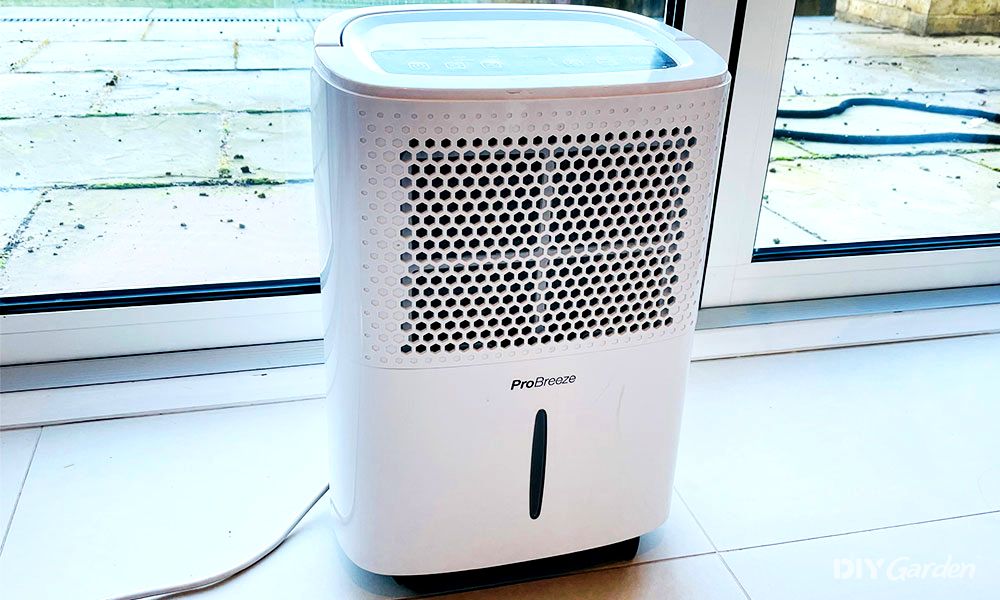
-
Pro Breeze 20L Dehumidifier
-
Meaco MeacoDry ABC Dehumidifier
-
EcoAir DC18 Compact Portable Dehumidifier
-
Dimplex FTE16 Dehumidifier
-
VonHaus 20L Dehumidifier
Conservatory Dehumidifier Reviews
- Makes a noticeable difference to the amount of moisture visible on windows
- Carrying handle and wheels make it easy to move around from room to room
- Improves musty smell as well as dampness itself
- Indicator lights useful for rough idea of humidity and LED screen displays exact humidity
- Drainage hose can be used instead of water tank so as not to worry about tank getting too full
- Fan is quite loud even on night mode
- 450 W motor is relatively power hungry and using dehumidifier may be noticeable on electricity bill
If you’re constantly battling condensation and damp in the conservatory, this Pro Breeze 20L Dehumidifier is a great machine to add to the ranks.
It can remove 20 litres of moisture per day and has an automatic ‘humidistat’ sensor (like a thermostat, but for humidity). There’s also as an easy-read digital LED display and a large 5.5 litre water-storage tank.
In order to maintain the correct humidity in the home (which should be around 30-50%) you can set the dehumidifier to uphold your desired level (settings available from 30 – 80%).
It has one of the largest extraction rates of all the dehumidifiers featured on this page, removing up to 20 litres of moisture from the air per day. The dehumidifier will switch off automatically if it senses that the water storage tank is full. It can also be connected to a continuous drainage hose if you want to leave it running without worrying about the tank filling up.
Although relatively heavy, there are wheels in place to make this dehumidifier easier to move around. It also has a handle for carrying.
In terms of performance, this dehumidifier can make a visible difference inside the home – reducing condensation on the windows and improving the overall indoor temperature.
The Pro Breeze does have some additional features that other dehumidifiers lack, such as a child lock setting. It also has a sleep timer and laundry-drying mode, as well as lights to indicate the room’s current humidity level.
Overall, it’s one of the best dehumidifiers for your conservatory due to its impressive power and ability to draw plenty of moisture from the room.
Did you find this review helpful?
- Specially designed to be quiet so perfect for bedrooms and offices as well as conservatories
- Easy to quickly set up with simple instructions, limited assembly and intuitive controls
- Full-speed laundry mode works to draw moisture out of air quicker around washing hanging indoors
- Relatively economical to run (as dehumidifiers go!)
- Very effective at removing the moisture from the air and reducing condensation
- Although quiet, the fan turning creates a vibration which can be felt on wooden floors
- Weighing 10 kg, some people may find it difficult to lift
If you’re looking for a quiet dehumidifier, the MeacoDry ABC 10L Dehumidifier produces only 35 decibels and has been awarded a ‘Quiet Mark’ certification.
It’s also been recognised as a Which? best buy, which is reassuring in terms of its quality and performance.
With a capacity to remove up to 10 litres of moisture from the air per day, it’s a smaller unit than many of the dehumidifiers on this page. As a result of this, it’s not quite as powerful as some of the bigger machines – but this means it doesn’t use as much energy as them either.
Consuming 160 W, this is one of the best dehumidifiers for your conservatory if you are looking for something that works well without it being overly loud or astronomically expensive to run. You’re looking at a cost of roughly 3.14p per hour.
However, it’s worth pointing out that this dehumidifier is best suited to smaller rooms, not large cavernous ones.
There is a humidistat for controlling the humidity, and a specific laundry setting that will run the dehumidifier for six hours on full power. It can help with drying clothes, as well as reducing condensation and moisture on windows. There’s also a timer function, to give better control over energy usage.
As a light and compact unit, it’s easy to move between rooms. Plus, due to its quietness, it will be a good option if you need to have a dehumidifier in the bedroom too. Whilst the MeacoDry ABC still makes an audible noise (35 dB is roughly equivalent to the sound of someone whispering), it’s a lot more conducive to sleep than some other dehumidifiers.
Did you find this review helpful?
- Makes noticeable difference to humidity and can help with drying washing indoors
- On the lowest setting this dehumidifier is relatively quiet
- Viewing circle on front makes it possible to see how full the tank is
- The water tank can be a little fiddly to remove and replace
- All the buttons beep which can be disruptive if you are changing the settings during the night
Offering a good balance between features and price, this EcoAir DC18 Compact Portable Dehumidifier is one of the best dehumidifiers for your conservatory if you’re after value for money.
It has the capacity to draw up to 18 litres of water from the air per day, and has a relatively large 3.5 litre water tank. These are good specs compared to other models in the same price bracket, and it also built-in humidistat to allow the desired humidity level to be maintained.
Not only can this dehumidifier help reduce dampness in conservatories and bathrooms, it can also speed up the process of drying washing inside by removing excess moisture from the air. There’s no specific laundry setting, but there is an optional 2h/4h timer to make it easier to use.
The only issue with this timer is that it might be more useful if there was one longer period available, like eight hours.
Although this dehumidifier is described as portable, it might be larger than you would expect, measuring 22.5 x 49.5 x 35 cm. It does, however have easy-glide caster wheels to help move it across hard floors.
There’s also a washable air filter and choice of two fan speeds to reduce energy consumption.
It’s just about quiet enough to be used at night-time in a bedroom if necessary, producing approximately 45 dB; it shouldn’t be too distracting whilst reading or listening to the radio in the conservatory either. 45 dB is roughly equivalent to the noise of a conversation at home.
Did you find this review helpful?
- Reduces moisture in the room quickly and efficiently
- Switches off automatically once the water tank is full so can be left on with no concerns of it overflowing
- Built in 'humidistat' to maintain desired humidity
- Easy to move around thanks to the castor wheels
- No window in the water tank to check on how full it is
- Quite noisy so may be disruptive if you use your conservatory to read, work or relax
- Numbered dial does not indicate what level of humidity each number relates to - this needs to be remembered from the manual
- No carry handle on top and uncomfortable to hold at the sides
Suitable for medium-size rooms, of approximately 10 – 24 m², this Dimplex FTE16 Dehumidifier will effectively keep moisture at bay in the conservatory.
It has a somewhat simpler design than the pricier models on this list, but still works well to limit condensation and damp; it’s capable of extracting up to 16 litres per day.
Whilst a lot of dehumidifiers have a small display screen, the Dimplex FTE16 does not. Instead of being able to see the current humidity, there are numbered settings (1 – 9) that correlate to different humidity levels.
These work as the ‘humidistat’. For example, on setting 6 the dehumidifier will kick in when it senses that humidity is around 40% or more.
Although this may take a little getting used to, the more basic design is likely the reason that this powerful dehumidifier is priced more conservatively than its competitors.
It also doesn’t negatively impact the effectiveness of the dehumidifier itself.
When the 2.3 litre tank is full, the dehumidifier automatically switches off to avoid accidents. There’s a small icon on top of the unit that lights up when the tank is full. It’s also possible to connect a continuous hose to the tank, so that it empties elsewhere.
Considering its price and size, this is one of the best dehumidifiers for your conservatory if you want a relatively large unit on a budget. It achieves a good middle ground between size, performance and price.
When it comes to volume, it should be noted that this dehumidifier is relatively noisy – sufficiently so that it may disrupt sleep.
Did you find this review helpful?
- Suitable for large conservatories - capable of removing moisture in rooms up to 35 m²
- Large 4 L water tank doesn’t need constant emptying
- Automatically shuts off once the water tank is full
- Silent mode isn’t particularly quiet
- It is easy to spill water when emptying the tank
This large Vonhaus 20L Dehumidifier can help keep the humidity at around 55 – 65% even in a large conservatory.
It’s capable of pulling 20 litres of moisture from the air, in spaces up to 35 m². Plus, thanks to the 4-litre water tank, it doesn’t need emptying too frequently either. There’s also a hose included to allow for continuous drainage, rather than relying on the water tank, if preferred.
Several different features make this humidifier both easy and intuitive to use, with a simple LED display, 24-hour timer and ‘full tank’ warning light. It will also turn off automatically once the tank is full. Furthermore, a ‘child lock’ feature stops the settings from being changed unintentionally.
In terms of performance, this dehumidifier reduces the humidity sufficiently that there is a noticeable increase in the indoor temperature, as well as visibly less condensation on windows. When used on turbo, it can be a useful machine to speed up the process of drying clothes inside; however, this mode can be quite noisy.
Although there is a quiet night mode, it is about the same as having a fan on. Therefore, it’s not too interruptive, but some lighter sleepers may struggle if hoping to use it in the bedroom at night. Nevertheless, for use in the conservatory, it should blend into background noise.
Did you find this review helpful?
How to Choose the Best Dehumidifier for your Conservatory
Dehumidifiers can make such a difference to the air quality in your conservatory. If the windows are ever wet with condensation, or there is mould or damp growing on the walls, a dehumidifier will help remove to much moisture from the air. Ideally, the humidity of a home should sit between 30 – 50%.
They can even be used to help dry washing faster, by keeping the humidity down.
When choosing the best dehumidifier for your conservatory, it will depend on the size of the room, the desired outcome, and how much power you’re willing to use. The following outcome should help inform your decision.
READ NEXT: The Best Conservatory Heaters
Litres-Per-Day Capacity
A lot of dehumidifiers describe themselves in litres – 20 L, 16 L, 10 L and so on. This number doesn’t refer to their tank size, but instead relates to their capability – it refers to the maximum amount of water the machine can extract from the air in one day.
It’s rare for a machine to actually remove anywhere near its maximum potential, as it will depend on the temperature and humidity of the room. The manufacturer’s litres-per-day capacity will have been calculated and tested in lab conditions, in an ideal setting for moisture extraction.
Nevertheless, it’s still worth paying attention to the litre-per-day capacity, as dehumidifiers with a higher capacity tend to be more powerful and suited to larger rooms.
A lot of dehumidifiers, even those with large litre-per-day capacities, have water collection tanks of 6 L or less, so don’t be put off by those smaller numbers.
Desiccant or Compressor Dehumidifier
There are two different type of dehumidifier on the market, and it’s good to be aware of which one you are buying as they can produce slightly different results.
Compressor Dehumidifiers
These machines are the ‘originals’ when it comes to dehumidifying – their design has been around for a long time.
They work in a simple, logical way. Inside a compressor dehumidifier, there is a cold surface. When warm, damp air is drawn in over this surface, it forms condensation. The dehumidifier will then remove this moisture, meaning there’s less moisture in the room’s air.
This style of dehumidifier works better in warm environments because it requires the internal temperature of the dehumidifier to be lower than the surrounding air. If temperatures are below 15°C, a desiccant dehumidifier will be a better choice. Compressor humidifiers don’t raise the temperature as much as desiccant dehumidifiers, so in hot environments where you don’t want more heat, a compressor dehumidifier will be more desirable.
Out of the two types of dehumidifier, compressor dehumidifiers are generally cheaper to run.
Desiccant Dehumidifiers
Instead of having a cold surface to force condensation, a desiccant dehumidifier contains a wheel that absorbs moisture like a sponge.
Desiccant dehumidifiers can significantly warm the air as it passes through, sometimes by as much as 10°C. This makes them a good choice for cold environments, although it does mean that running the machine requires more power and is therefore more expensive.
Generally speaking, a desiccant dehumidifier will be quieter than a compressor model. They tend to have multiple fan speeds which also gives a choice of volume. The quietest dehumidifiers tend to cost a bit more, but it’s well worth the investment if you plan to keep it running through the night.
READ NEXT: The Best Conservatory Ceiling Fans
Choosing Which Size Dehumidifier to Buy
You should choose a dehumidifier based on the existing humidity levels and the size of the room.
The following information gives a rough guide about which size dehumidifier you should buy:
Mild Damp
If the environment isn’t overly damp, and isn’t used for showering or drying washing, you can use a dehumidifier with a capacity of 14.5 L or less. This applies even in a large rooms of 100 m². In a medium room, of around 45 m², you can get away with using a much smaller dehumidifier, around 5.5 L.
Severe Damp
In a room with significantly more moisture, you will want a dehumidifier with a capacity of at least 7.5 L for a space of 45 m². For larger spaces, you should consider a dehumidifier of at least 20 L.
Wet
If there has been a leak in your house, or the walls and floors are noticeably wet, you should use a dehumidifier of at least 8.5 L/day in a small/medium room, and a dehumidifier of around 25 L in a large space.
Additional Features
There are additional features present on some dehumidifiers that you may find useful, here are some of the ones to look out for:
- Humidistat
This comes as standard on most dehumidifiers, but not all. It’s worth looking out for as it’s a very useful feature. Instead of manually setting how much power you want the dehumidifier to be using, you can set the unit to how much humidity you want in the air. Much like a thermostat, but for humidity, the dehumidifier will then work to maintain the set humidity level. This can stop it from using power unnecessarily and also allow a comfortable environment to be upheld.
- LCD display
Dehumidifiers with an LCD display can be easier to use and understand than those without. They can display information like the current humidity level, as well as allow you to see what you’re setting the humidistat to.
- Child lock
A useful feature which will lock all of the buttons to stop children from being able to change the dehumidifier settings accidentally.
- Laundry setting
This will usually put the dehumidifier on high power for a set period of time. If placed inside near hanging, drying laundry, the dehumidifier can speed up the drying process by wicking away water.
- Automatic switch-off (when the water tank is full)
For peace of mind, it’s helpful if the dehumidifier will automatically switch off when the tank is full. This will stop the tank from being able to overflow.
- A continuous hose connection
Some dehumidifiers will come with a hose than can be connected to funnel water away from the dehumidifier. This is especially useful if there is a lot of moisture in the air and you don’t want to be frequently emptying the tank.
- Timer function
Like many electronic devices, it can be useful for a dehumidifier to have a timer function. This will allow it to run for a certain period of time, before turning itself off – useful for saving power if you think you might leave it on for longer than intended by accident.
Conservatory Dehumidifier FAQs
Mould loves a damp environment. It grows quickly when moisture collects on cold surfaces such as glass and outward-facing walls. Conservatories are particularly at risk of condensation and mould because the temperature varies so much.
You should open the windows as often as possible to let in circulating air to dry up condensation, and mould build-ups can be dealt with by commercial sprays, but if this is difficult and mould keeps returning then a dehumidifier can help extract moisture before it turns into condensation and mould.
Dehumidifiers work by collecting the excess moisture in the air preventing it from turning into condensation and mould. Moisture is stored in a water tank ready for disposal.
There are two types:
Refrigerant (or compressor) dehumidifiers draw in air which condenses on a cold coil and drips into a storage tank. They are recommended for hotter environments such as a family home that’s occupied all day.
Desiccant dehumidifiers use an absorbent material to soak moisture which is then heated so it drips into the water storage tank. These are recommended for lower temperature environments like an unheated conservatory.
There is no standard limit but it’s best not to leave it 24/7.
Some of the more expensive dehumidifiers have a humidity sensor which is sometimes called a ‘humidistat’ that’ll tell you how much moisture is in the air.
Most people aim for 50% humidity, so you can leave your machine on until this level is reached. Always check the user manual in case there is a maximum time limit that the dehumidifier should be on for.
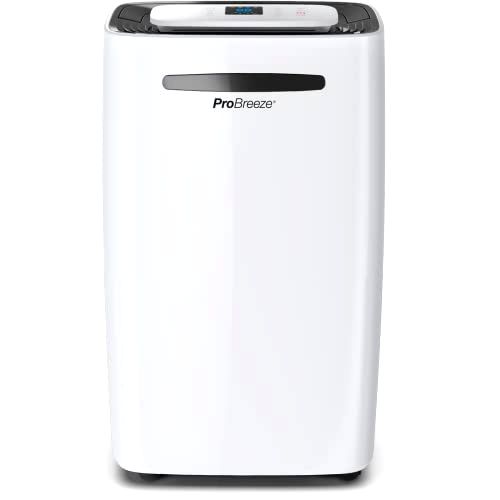
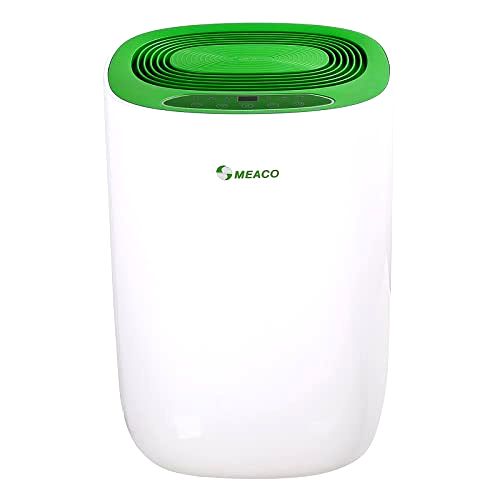
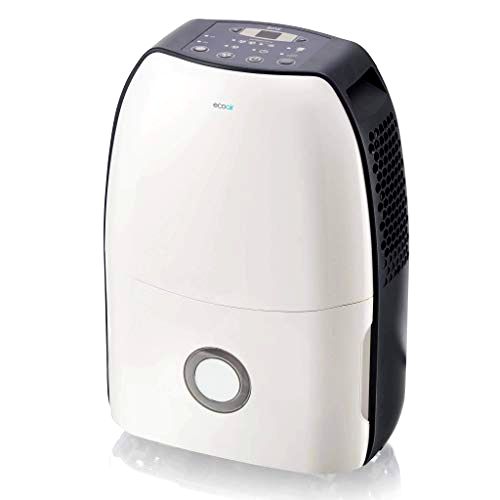
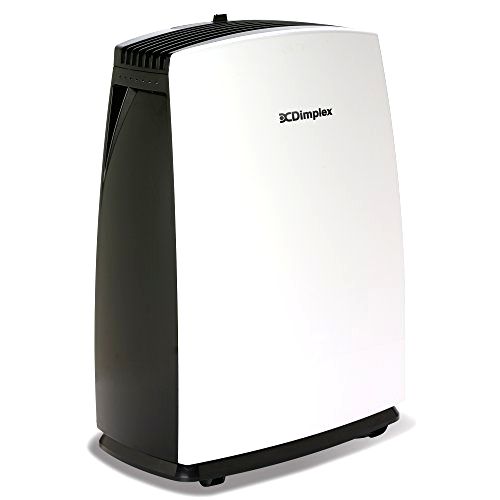
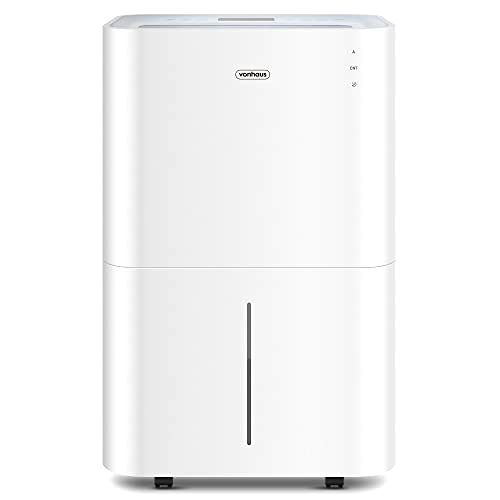

Share